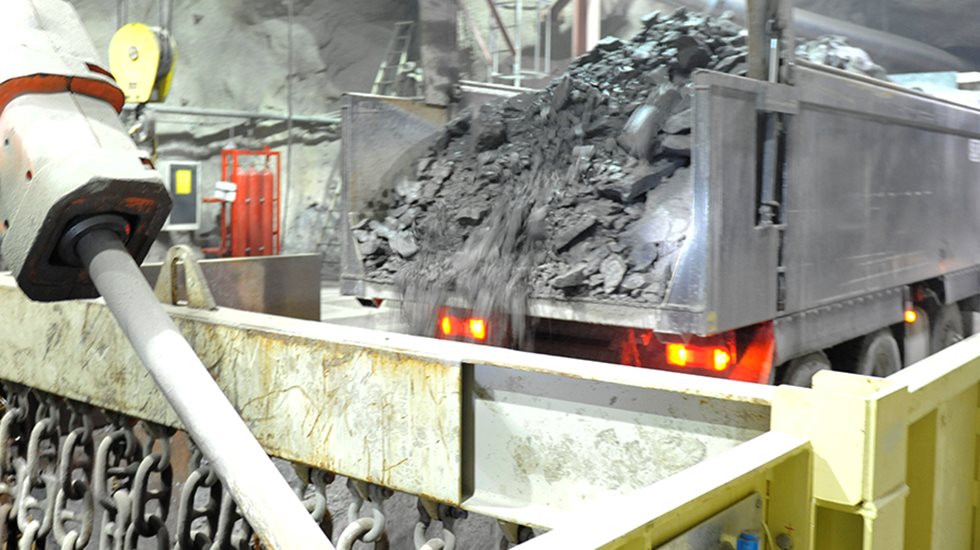Scalping is usually recommended before a jaw crusher, whereas gyratory crushers can handle the excavated ore as such. This is because primary gyratories are not as sensitive to fines: they are large, steep and have a relatively short stroke compared to settings that allow fines to flow through more easily.
The primary gyratory kinematics produce a straight, compressive crushing function without the grinding action found in a single toggle jaw, therefore the liner wear is not as high per ton of crushed material.
Scalping is recommended for a jaw crusher for three main reasons:
- Capacity increases when material below the crusher setting bypasses the crusher; also the energy consumption is lower.
- The life of wear parts increases; a jaw crusher usually wears more manganese steel per crushed ton than a gyratory crusher.
- Feeding fines into the crusher may increase peak stress loads because of packing, i.e. material being compacted as far as it compacts. This is enhanced by moisture, which again is highest in the fines and quite common in underground mines.
The most compact way to scalp is with a vibrating grizzly feeder. However, using a separate feeder and a scalper allows both components to be optimized for improved process control and performance.
Points against scalping:
- A separate scalping grizzly adds a new piece of equipment into the process, increasing capital costs and requiring maintenance. The installation also calls for chutes and other bypass arrangements, which may hinder maintenance access.
- In an underground mine, the feed tends to include more foreign objects than in a surface operation. Debris, such as rock bolts, wire mesh, cable, pieces of pipe or wood etc., may get stuck in the scalping grizzly.
- If the crushing plant will be operated remotely and as highly automated as possible, the debris can cause unpredictable clogging of the grizzly. Getting someone to the plant to clean things up can take a while, and the cleaning itself takes time. Downtime leads to lower long-term capacity and weaker process reliability.
- In practice, issues like debris and occasional slightly oversized feed can be resolved by selecting a crusher size that is clearly above the theoretical need and thus less sensitive to variations in the process.
